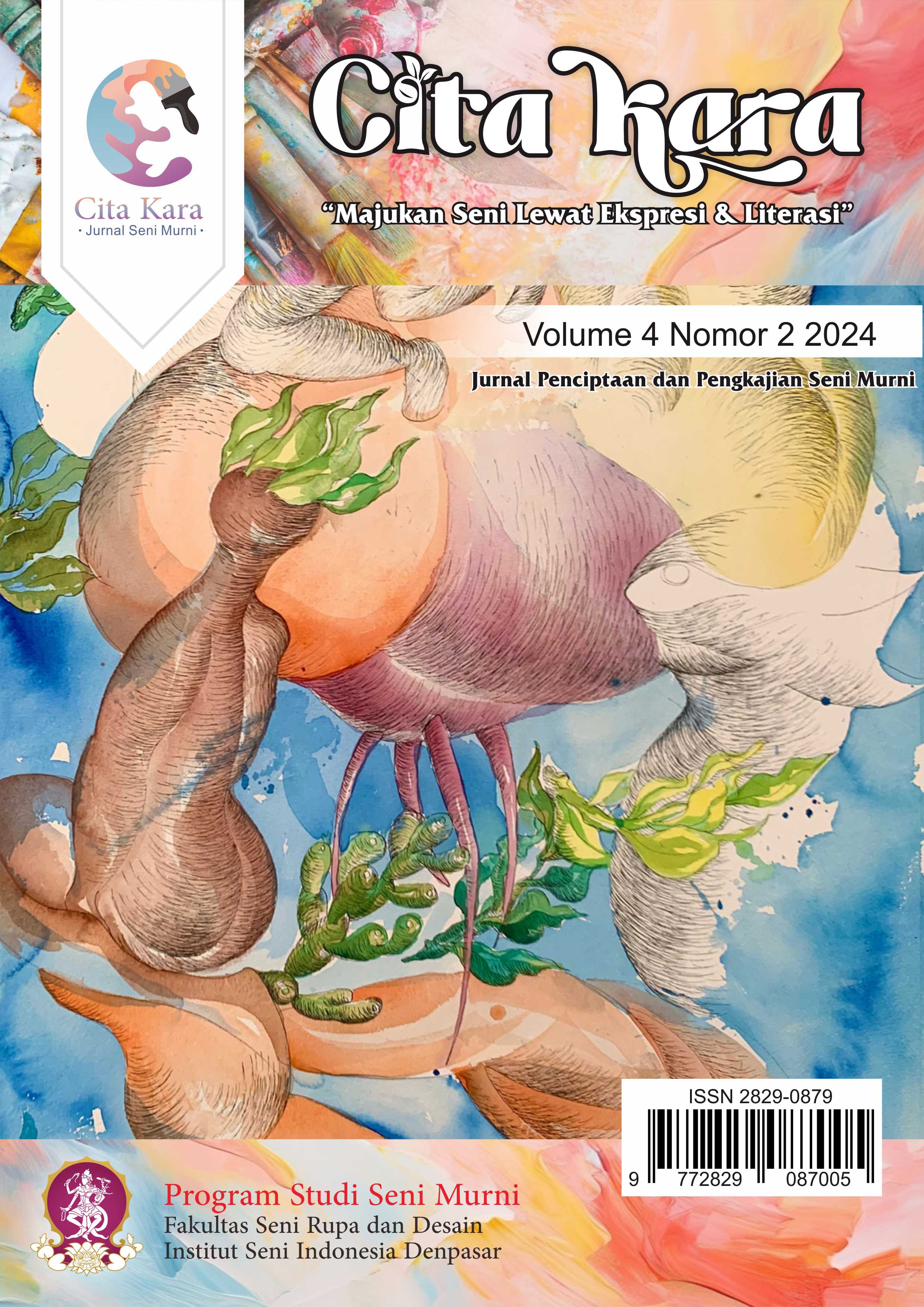Visualization Of The Barong Landung Of The Abiantuwung Tabanan Village In Paintings
DOI:
https://doi.org/10.59997/ctkr.v4i2.3294Keywords:
Barong landung, Visualization, Lunga, PaintingAbstract
Bali has many types of dances. In Bali you can find many types of dance, such as the barong dance. One of them is Barong Landung, which is the embodiment of a human or giant. With the presence of barong landung, Balinese people interpret it as a force that is believed to provide safety. The research problem focuses on the form of barong landung in the Abiantuwung Traditional Village, Barong Landung has a symbol of connection with Pura Dalem Balingkang. The research uses qualitative methods with analysis of interview and observation data. From the research results, it was found that the Barong Landung in the Abiantuwung Traditional Village is different from the barong landung in general in Bali. Barong landung is the embodiment of the Almighty Creator himself, which undagi in the past was certainly created in accordance with the conditions of the time at that time, namely when intercultural marriage between China and Bali was hot. The charm of this dance can generally only be enjoyed at special moments such as religious holidays in Bali which are usually called Piodalan which are held at certain temples. However, the barong landung in the Abiantuwung Traditional Village is only performed on certain days, such as at certain sasihs where the barong landung goes around at night without lights.
References
Eiseman, F. B. (1990). Bali: Sekala and Niskala: Essays on Religion, Ritual, and Art. Periplus Editions.
Forge, A. (1978). Balinese Traditional Paintings: A Selection from the Forge Collection of the Australian Museum, Sydney. Australian Museum.
Hobart, M. (2013). Rethinking Balinese Dance. KITLV Press.
McPhee, C. (2003). The Social Structure of a Balinese Village: Kinship, Caste, and Community. Koninklijk Instituut voor Taal-, Land- en Volkenkunde.
Suryani, L. K. (2014). Balinese Art and Culture: Symbolic and Philosophical Considerations. Institute of Southeast Asian Studies.
Arini, P. E., & Suardika, I. K. (2020). Representation of Balinese cultural identity through traditional painting. Journal of Cultural heritage Management and Sustainable Development, 10(3), 218-230. https://doi.org/10.1108/JCHMSD-08-2019-0102.
Purnama, M. (2019). Barong Landung as an expression of Balinese identity in visual arts. International Journal of Visual Arts and Design, 7(1), 45-57. https://doi.org/10.29210/78910001.
Widiastuti, N. M. (2016). The role of traditional Balinese arts in preserving cultural heritage: A study of Barong Landung. Asian Arts and Culture Journal, 4(2), 76-89. https://doi.org/10.1234/asiaartsculture.4.2.76.
Sarta, I. K. (2023, Oktober). Wawancara dengan dasaran di pura Desa Adat Abiantuwung, Kediri, Tabanan [Komunikasi pribadi].
Sutapa, I. K. (2023, Oktober). Wawancara dengan pemangku Pura Gusti Desa Adat Abiantuwung, Kediri Tabanan. [Komunikasi pribadi].
Widiantara, E. P., Darmawiguna, I. G. M., Crisnapati, P. N., & Sunarya, I. M. G. (2014). AUGMENTED REALITY STORY BOOK PROJECT “Legenda Asal Mula Barong Landung.” KARMAPATI (Kumpulan Artikel Mahasiswa Pendidikan Teknik Informatika), 3(5), Article 5. https://doi.org/10.23887/karmapati.v3i5.19799
Sarta, I Ketut (60th.), Dasaran, wawancara tanggal 22 Oktober 2023 dirumahnya, Banjar Koripan kelod, Kediri, Tabanan, Bali.
Sutapa, I Ketut (56th.), Pemangku, wawancara tanggal 21 Oktober 2023 dipura Gusti, Banjar Abiantuwung kelod, Kediri, Tabanan, Bali.
Downloads
Published
Issue
Section
License
Copyright (c) 2024 I Putu Budiana, I Wayan Karja, Luh Budiaprilliana

This work is licensed under a Creative Commons Attribution 4.0 International License.









